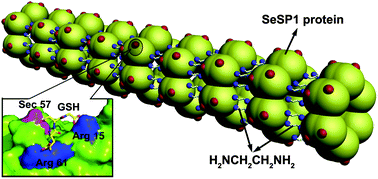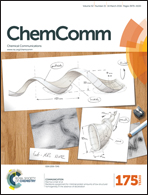The construction of functional protein nanotubes by small molecule-induced self-assembly of cricoid proteins†
Abstract
A simple strategy has been developed to construct high-ordered protein nanotubes using electrostatic interactions and “zero-length” crosslinking induced by small molecular ethylenediamine. Furthermore, utilizing covalent crosslinking, we constructed stable nanoenzymes with multi-glutathione peroxidase (GPx) active centers on the surface of the nanotubes, which were anticipated to be ideal functional bionanomaterials.


 Please wait while we load your content...
Please wait while we load your content...